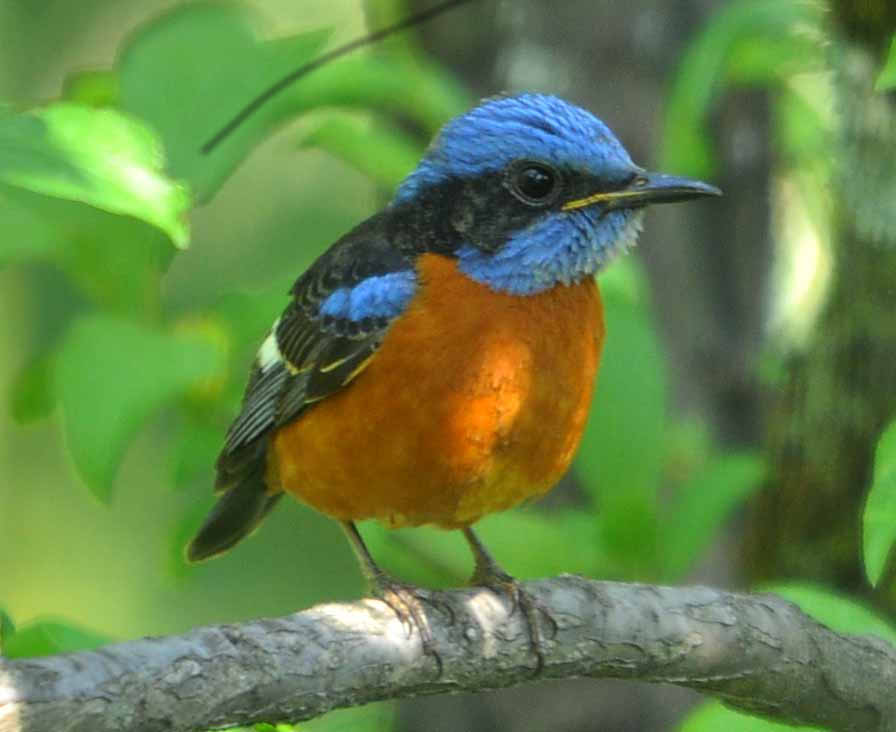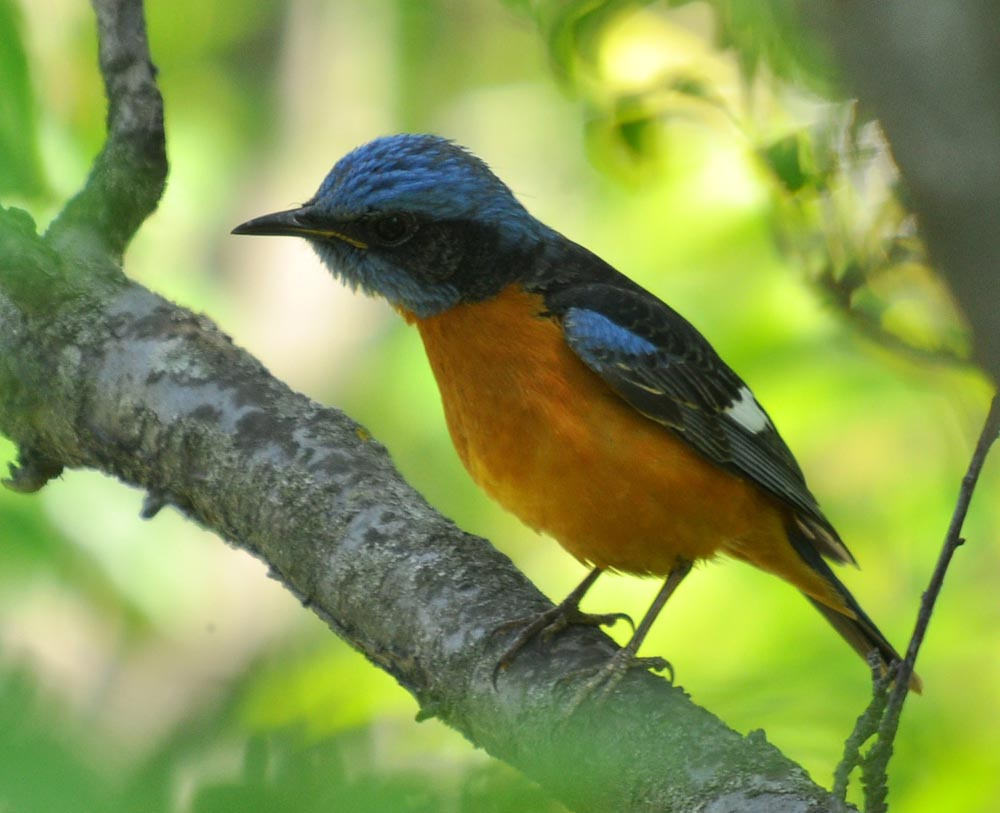
Monticola cinclorhynchus (Blue capped Rockthrush)
Monticola cinclorhynchus, known as the Blue-capped Rock Thrush, is a stunning migratory bird found within the scenic landscapes of the Great Himalayan National Park (GHNP). Characterized by the male’s vivid blue head, contrasting orange underparts, and the female’s more subdued brownish tones, Monticola cinclorhynchus adds vibrant color to the park’s forests during the breeding season. Its melodious and flute-like song resonates through GHNP’s wooded valleys, making it a favorite among birdwatchers and nature photographers.
Visitors to GHNP often seek sightings of the Blue-capped Rock Thrush during spring and early summer when the species is most active and visible.
Habitat and Distribution in GHNP
In the Great Himalayan National Park, Monticola cinclorhynchus typically inhabits dense forests, woodland edges, and riverine areas at altitudes ranging from 1,200 to 2,700 meters. It shows a preference for shady, moist forest environments where tall trees and clearings are abundant.
The Tirthan and Sainj valleys are particularly good locations for observing this species, especially along forest trails and near small streams. During migration, some individuals may descend to lower elevations outside the park boundaries.
Behavior and Diet
Monticola cinclorhynchus feeds mainly on insects, small invertebrates, and fruits, foraging mostly on the ground or in low undergrowth. Its diet changes slightly with the seasons, depending on the availability of prey and fruits.
The Blue-capped Rock Thrush is known for its shy behavior, often retreating quickly into dense cover if disturbed. Males are highly vocal during the breeding season, using their rich songs to defend territory and attract mates. Nests are usually placed in tree holes or crevices in rocks, lined with grasses and moss.
| Common name | Blue-capped Rock Thrush |
| Scientific name | Monticola cinclorhynchus |
| Family | Muscicapidae |
| Description | It is 17 cm. An elegant Himalayan bird, common at an altitude of 1300– 2200 m. It prefers open forest, rocky grassy slopes. The male has a white wing patch and blue-black tail; blue crown and throat and orange underparts, obscured by pale fringes in non-breeding and first winter plumages. The female has uniform olive- brown upperparts; lacks buff neck patch of chestnut –bellied and orange red tail of Rufous-tailed. It is a summer visitor to the Himalayas and spent summer in open dry forest while its winters are spent in moist forest and well-wooded areas. |
Conservation Significance
Currently categorized as a species of Least Concern, Monticola cinclorhynchus benefits from the preserved natural habitats within GHNP. The park’s efforts in maintaining forest health and limiting human disturbance are crucial for supporting healthy breeding populations of this and many other migratory species.
The presence of the Blue-capped Rock Thrush in GHNP highlights the importance of Himalayan forests as critical breeding grounds for a wide variety of avian species.




